- Home
- Robert Hellenga
The Sixteen Pleasures Page 17
The Sixteen Pleasures Read online
Page 17
“Yes, I’m aware of that.”
“So you didn’t really accomplish anything.”
“I wasn’t trying to accomplish anything, and anyway, if the sacraments work after death, then there’s no point in kicking up a fuss, is there?” (I was getting angry, or trying to work up a reserve of anger, like having a drink, to keep me going.)
“Why take unnecessary risks?”
“Do you really believe that Sister Agata’s soul was at risk?”
“It’s unlikely, I admit. But when the stakes are so enormous, you want to do everything possible to avoid eternal damnation.”
I didn’t say anything more. I just sat there passively aggressive.
The bishop didn’t say anything more either, and there was a long, awkward silence. It’s difficult enough to find your way in this world without worrying about the next.
Several minutes went by. The bishop walked up and down, like a caged animal in a zoo. But not one of the cats. More like a large bear. Awkward. I stood and looked out the window. As far as I know it’s the only window in the place that looks out onto the street, the piazza, where Mama and I used to shop: cheese, milk, bread. Sitting down I could see the top of one of the Donati towers, which had been turned into a fancy apartment. Mama went there for drinks once and told me all about it.
The bishop turned and stopped. “There’s something else too. A book, possibly quite rare. I learned about it only by chance, when I was hearing confessions. Madre Badessa says she gave it to you to dispose of.” The bishop fixed me with his eyes: “And have you done so?”
“Yes, as a matter of fact.”
“To whom, may I ask?”
I wasn’t sure what to say. I’d told Madre Badessa that I’d return the book to her as soon as possible, but I didn’t want to cave in to the bishop. “To a bookseller in the Piazza Goldoni,” I said, thinking of the man I’d seen standing in front of one of the shops, tall, gray, smoking a cigar and crying.
“Rubbish. The Piazza Goldoni was completely destroyed by the flood. You couldn’t possibly have found anything open there.”
“One of the owners was standing outside his shop,” I said. I was in for it now. I was not accustomed to lying, but I knew enough to keep it simple and stick to my story.
“What was his name?”
“I have no idea.”
“Which shop?”
“I don’t remember.”
“This man told you he was the owner?”
“Not exactly.”
“But you sold him the book?”
“Yes.”
“You asked him if he was a dealer in rare books?”
“Yes.”
“And he said he was?”
“Yes.”
“And you showed him the book?”
“Yes.”
“And he offered to buy it from you?”
“Yes.”
“I won’t ask how much he gave you.”
“No.”
“Do you know why?”
“No.”
“Because it’s patently obvious that you are lying through your teeth.”
He suddenly became very animated. His face grimaced. He tipped his head back and began to stroke his chin violently with the backs of his fingers.
I didn’t deny that I was lying. There was nothing he could do. Maybe.
“Madre Badessa has no right to alienate any convent property, not a stick, do you understand? The books in the library are not her property.”
“I think she was mainly concerned to get the book out of the convent. It was very salacious. It doesn’t belong here.”
“You looked at it then?”
“Just enough to see what it was.”
The bishop leaned back, drummed his fingers on the table. There were rings on every other finger.
“You must return the book,” he said at last. “You may return it to me, to spare Madre Badessa’s feelings. It is illegal, you know, to take works of art out of the country. If you do not return the book to me, I shall notify the Vigilanza ai Beni Artistici in Rome to search your luggage, and your person, before allowing you to leave the country. You will not be permitted to take the book with you.” The bishop didn’t strike me as a man of empty threats, but . . .
“But I don’t have it.”
“But you know where it is, don’t you? And you’re planning to take it with you.”
“Boh,” I said—getting as much nose into it as I could. “Why is it so important? A work of pornography. I’m surprised you’re so interested.”
The bishop was evidently ready for this question. “It may be of great historical interest. But that’s beside the point. The point is that you must return the book at once. Immediately, do you understand? There’s nothing more to discuss.”
And that was the abrupt end of my interview with the bishop of Florence. I don’t think I’ve ever been so glad to see a man leave a room as I was then. Not even Jed Chapin. I won’t pretend that I wasn’t upset, but when Madre Badessa came into the room I told her that everything was fine. She didn’t ask me any more questions, so I didn’t have to tell her any lies.
According to the art historian Giorgio Vasari, Giulio Romano, Raphael’s greatest pupil, employed Marcantonio Raimondi to make a series of engravings of sixteen erotic drawings, sometimes known as “The Sixteen Pleasures,” and Pietro Aretino made matters worse by writing a sequence of indecent sonnets to accompany the engravings. The original drawings may have been executed in the Vatican, on the walls of what is now the Sala di Costantino, in order to embarrass Pope Clement VII, who was too slow in paying Giulio for some previous work. The room was later frescoed over with scenes from the life of Constantine. And in fact there is contemporary evidence to suggest the engravings (which are mentioned in Ariosto’s Supposti [1526]) were originally published separately in 1523, not 1525, which is the date of the Aretino volume. In any case there was a scandal of terrific proportions. Marcantonio was thrown in prison, Giulio was forced to flee to Mantua. The original plates were destroyed, and every effort was made to destroy all existing copies. The effort was apparently successful. No copy is known to exist. Except one, which evidently found its way into the library of Cosimo I, grand duke of Tuscany, at Poggio a Caiano, perhaps through the agency of Cosimo’s brother, Cardinal Francesca Maria, a well-known libertine. The shelf number on the flyleaf is in the same hand as that on many of the books in the convent library, which had come to the convent as part of Lucia’s considerable dowry. It is, however, impossible to say who was responsible for binding it together with the Preghiere cristiane, though one can easily imagine the motive.
A unique copy, then, of the most famous example of Renaissance erotica. You didn’t have to be an expert to realize that this was a valuable piece of property, but not even an expert could have given a trustworthy estimate. There was no way to estimate it, really, since the book had never been sold at auction and therefore had no track record. There was nothing to compare it to. In Sandro’s judgment the work had either been printed from the original plates (which had supposedly been destroyed), or else Marcantonio had re-etched them. In any case the quality of the engraving, according to Sandro, was very fine.
Vasari himself had not been able to conceal his disgust: “I do not know which was the more revolting, the spectacle presented to the eye by the designs of Giulio or the affront offered to the ear by the words of the Aretine.” Initially—sitting in Madre Badessa’s office, that is—I might have been inclined to agree with Vasari. But the more I contemplated the drawings—or perhaps I should say the more Sandro and I contemplated them—the more I came to believe that they told the truth, or at least a truth. The figures were not romanticized. There was a definite sense of stress and strain as odd curves of the body were exposed, curves that we tend to forget about because we almost never see them. Th
ese lovers, instead of confirming our prejudices and expectations, startled and astonished; they seduced and illumined, giving visual definition, as they did so, to . . . You know how art historians talk about Leonardo or Michelangelo exploring the limits of the human condition? That sort of thing? Well, something like that was going on in these engravings. In the faces as well as the bodies. There was none of the vacuity that characterizes the expressions of professional models. These faces had been drawn with great care, not like Dutch realism but like the faces of Leonardo’s angels, and like Rembrandt’s side of beef they spoke with a strange urgency. Turning back and forth from one to another I felt myself suffused, if that’s the word.
But you mustn’t think that I’m trying to conceal the sheer erotic impact of these drawings behind this fancy language. Sandro had heard about an electronic device marketed by a Japanese firm that’s guaranteed to produce an erection even in a dead man, if he hasn’t been dead too long. These drawings might just be equally effective—if you could get the dead man to open his eyes. If I had a favorite it was a representation of cunnilingus. It was my favorite because, after all these years, it was such an unexpected gift. And besides, it reminded me of Sandro. How funny he looked, in the cheval glass, how different from all the passionate love scenes I’d ever seen or imagined. What could it mean, this strange conjunction of the human face and the human bottom? The seat of reason, and the seat that one sits on? Reason and appetite. Nonanimal behavior. Nonpurposive. Mama used to say that Papa loved life and therefore didn’t mind looking foolish, and I thought the same thing applied to Sandro. He loved life and therefore didn’t mind looking foolish. And it does look foolish, doesn’t it? Imagine a grown man on his knees shoving his snout into a woman’s crotch. Lying on my back, my legs over the side of the bed, I could look straight down between my breasts and see the top of his shiny bald head between my legs, crowning like a baby’s head, as if I were giving birth.
11
The Sixteen Pleasures Restored
On Tuesday the twentieth of December at nine o’clock in the morning I left the convent of Santa Caterina Nuova. In tears. I’d been happy there, happier than I realized, and I felt close to many of the nuns, especially to Sister Gemma, who gave me the Saint Christopher medal she’d worn since she was a child, and to Madre Badessa, who gave me her blessing, held out her hand for me to shake, which I did, and then took me by the shoulders and looked as far down into my eyes as anyone had ever looked in my entire life. I had not yet returned the Aretino to the bishop, but Sandro was going to do so for me.
I let everyone think that I was going to take an express train that morning to Luxembourg, but in fact I wasn’t planning to leave Florence until the following morning, and as soon as we were out of sight of the convent I told the taxi driver to take me to Piazza Santa Croce. I wanted to spend an entire night with Sandro before I went home, and this was the only way I could think of to arrange it.
Sandro had some things to look after at the Uffizi, which was reopening in a couple of days, and I didn’t expect him until noon or so, so I removed the Aretino from the thymol chamber and checked it for the hundredth time for traces of mold. There were none. I put the signatures in order and placed them in the solander box I’d made to hold them. Then I took them out of the box and had another look. The engravings had not lost their power to astonish me. If anything I’d learned, by looking at them through Sandro’s eyes, to appreciate them more fully. It’s unusual for a great artist to concentrate his energies so intensely on the erotic, and though Marcantonio is not usually considered an artist of the very first rank, I was learning to see in the dynamic composition of the figures and in the heavily worked contours and dark cross-hatching that gave them a soft luminous quality, the influence of Raphael. I put the signatures back in the box, put on most of the clothes I’d brought with me, because it was cold, and sat down on my orange crate by the window to wait.
Piazza Santa Croce was in a state of disrepair. The buildings were discolored, stained by fuel oil from the thousands of furnaces that had been flushed out by the floodwater. A few had even been abandoned because they were threatening to give way and had been shored up with temporary supports. But I was drawn to it anyway.
It was cold, about as wintry as it gets in Florence. There was no snow in the city, but there was snow on the cars that had come down from the surrounding hills. Some of the leather shops had reopened, and the bars were doing a brisk business. Buon Natale signs appeared here and there, and signs announcing Christmas sales. There was still no central heat, but electric heaters took the edge off the chill. I watched a group of students—mud angels—cross the piazza on their way to the Biblioteca Nazionale. Soon they would be at work in the freezing cold basement, digging the archives of the city out of oil-impregnated muck, but they were laughing and happy because they were young and because, like me, they’d stumbled into a great adventure. But my part in the adventure was coming to a close, and I was feeling a little melancholy. Leaving the convent had been difficult enough, though the restoration operation was in good hands: the nuns were perfectly capable of treating the books and resewing them, and thanks to Sandro there were plenty of thymol crystals and absorbent paper. Sisters Angelica and Maria had managed to salvage much of the wood from the old library and the new bookpresses on the second floor would soon be ready.
But in a sense I’d already left the convent when I made love to Sandro the first time, and it was Sandro I was more concerned about leaving. I’d never had a man like that before, all to myself. And such an attentive man. I didn’t believe half his compliments, but he valued me enough to make them, that’s what counted. He was an old-fashioned man in many ways, a courtly man, a romantic man. And lots of fun, too. But it wasn’t till I saw him coming out of the Via Verdi with a bouquet of flowers in his hand that I knew I was in love and that even though my old life was calling me home, I didn’t want to leave him.
Imagine this man if you can: how fresh he looks, even at a distance, fresh as the flowers he’s carrying in his hand. Now he’s going out of his way to speak to an old man sitting at the base of the horrible nineteenth-century statue of Dante that disrupts the middle of the piazza, glaring at everything, perpetually angry at everyone. The old man gestures and Sandro gestures. They might be speaking to each other in sign language. You can almost tell what they are saying. The old man offers a cigarette, which Sandro accepts, though he’s not a regular smoker. He lights it. The old man gestures some more, spreads out his fingers, touches his Adam’s apple with the tip of his index finger, then makes a rapid pecking motion with his hand, as if his hand were a bird pecking at his throat. And finally, with his other hand he makes a long scooping motion just under his rib cage. It’s a gesture I’ve seen only once before, on the train to Pisa with Mama, shortly after we arrived in Italy. We were sitting in a third-class car with wooden seats, like the old streetcars in Chicago. We never knew what it meant. I asked all my friends, but they’d never seen anything like it. Sandro moves on. He can’t cross a piazza without talking to half a dozen people. Every tenth person stops to talk. Now a young woman with a baby, now an elegant woman in a fur, a countess (I imagine). He whispers something in her ear and points toward the window where I am standing. She looks up at me and touches her lips with one finger. A boy kicks a soccer ball in Sandro’s direction. He catches it with his foot and, magically, the ball rolls up and around his leg. He shoots it on its way and moves on, always in slow motion. You can’t get this man to hurry. Now he has to have an espresso and buy a lottery ticket. I wait. Now he stops to admire a display of leather purses outside a monte di pietà, a pawnshop. He opens one, looks inside, puts the strap over his shoulder, feels the weight, speaks to the pawnbroker, signs a receipt, it’s a going-away present. For me. But I’ve just decided that I’m not going anywhere. I’ve just decided that I’m going to stay right here.
I decided to stay in Florence because I was happier than I’d been in
years. I stayed because I was in love. But there was another reason, too, which was perhaps equally important. I did not want to return the Aretino to the bishop. The nuns were the ones who deserved the money, not the bishop. I had no idea what the book would bring, but whatever it was could be used to help preserve the convent library. Besides, I wanted to restore it myself. I wanted to put my stamp on it. Every profession has its peaks: the baseball hero steps up to bat with the bases loaded with two outs in the ninth inning in the final game of the World Series; the diamond cutter brings his hammer down on a rough diamond worth millions if only it doesn’t shatter into bits; the surgeon severs a nerve that will lead to blessed relief or excruciating agony; the lawyer pleads a case that will exonerate her client or condemn her to the electric chair, and so on. Book restorers seldom if ever enjoy the limelight, but they have hopes and fears nonetheless real. It was an opportunity I couldn’t pass up.
I was worried about the bishop, of course. I was afraid that he’d pester Madre Badessa about the book. But Sandro called his friend in Rome—the antiquarian book dealer—who sent us a small, inexpensive volume of nineteenth-century pornographic engravings. I soaked it overnight in a bucket of dirty water to simulate flood damage and Sandro delivered it personally to the bishop at the Episcopal Palace along with a note saying I’d asked him to return it to its rightful owner. It was an outright lie, but what was I to do? Technically the Aretino might belong to the bishop, or even the pope, but as far as I was concerned it was the exclusive property of the sisters of Santa Caterina Nuova.
“Do you think he was convinced?” I asked Sandro who had puffed himself up and was demonstrating how the bishop had paced up and down with his hands behind his back.
“‘A matter of great historical interest,’” he boomed. ‘“The signorina has done the right thing.’”

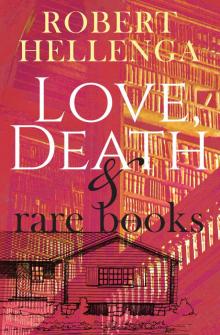 Love, Death & Rare Books
Love, Death & Rare Books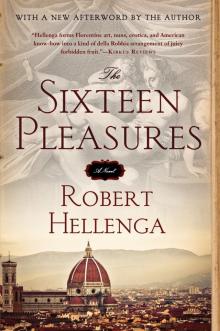 The Sixteen Pleasures
The Sixteen Pleasures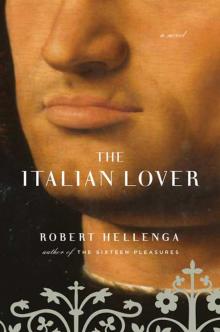 The Italian Lover
The Italian Lover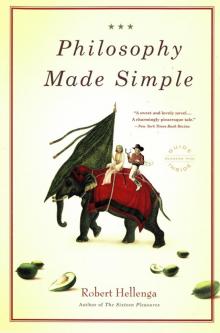 Philosophy Made Simple
Philosophy Made Simple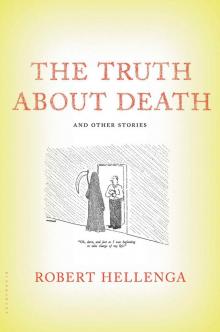 The Truth About Death
The Truth About Death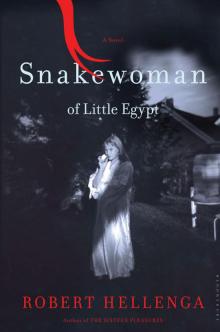 Snakewoman of Little Egypt
Snakewoman of Little Egypt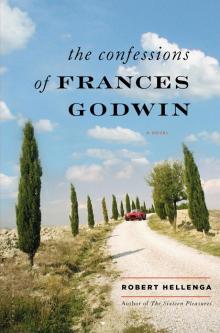 The Confessions of Frances Godwin
The Confessions of Frances Godwin